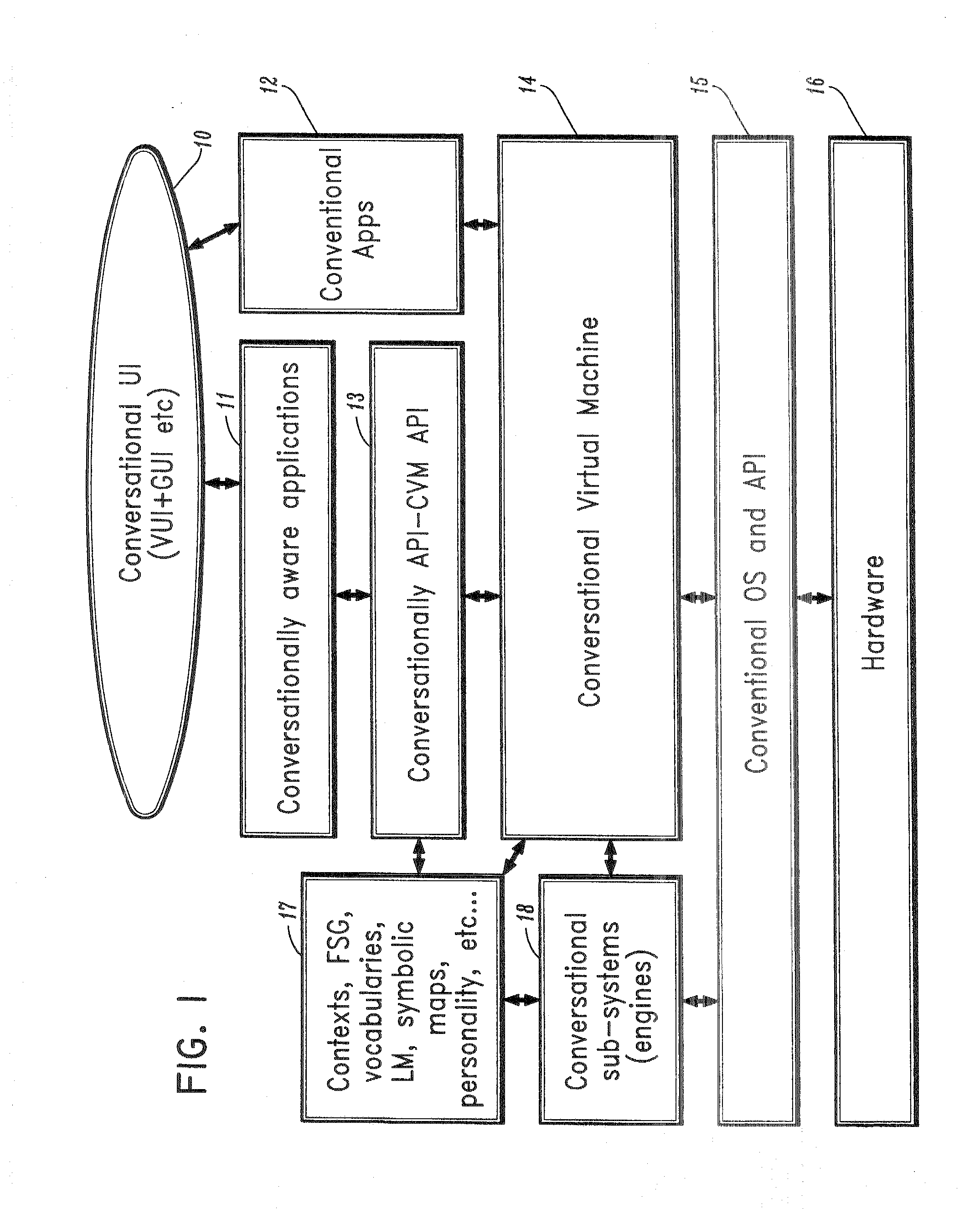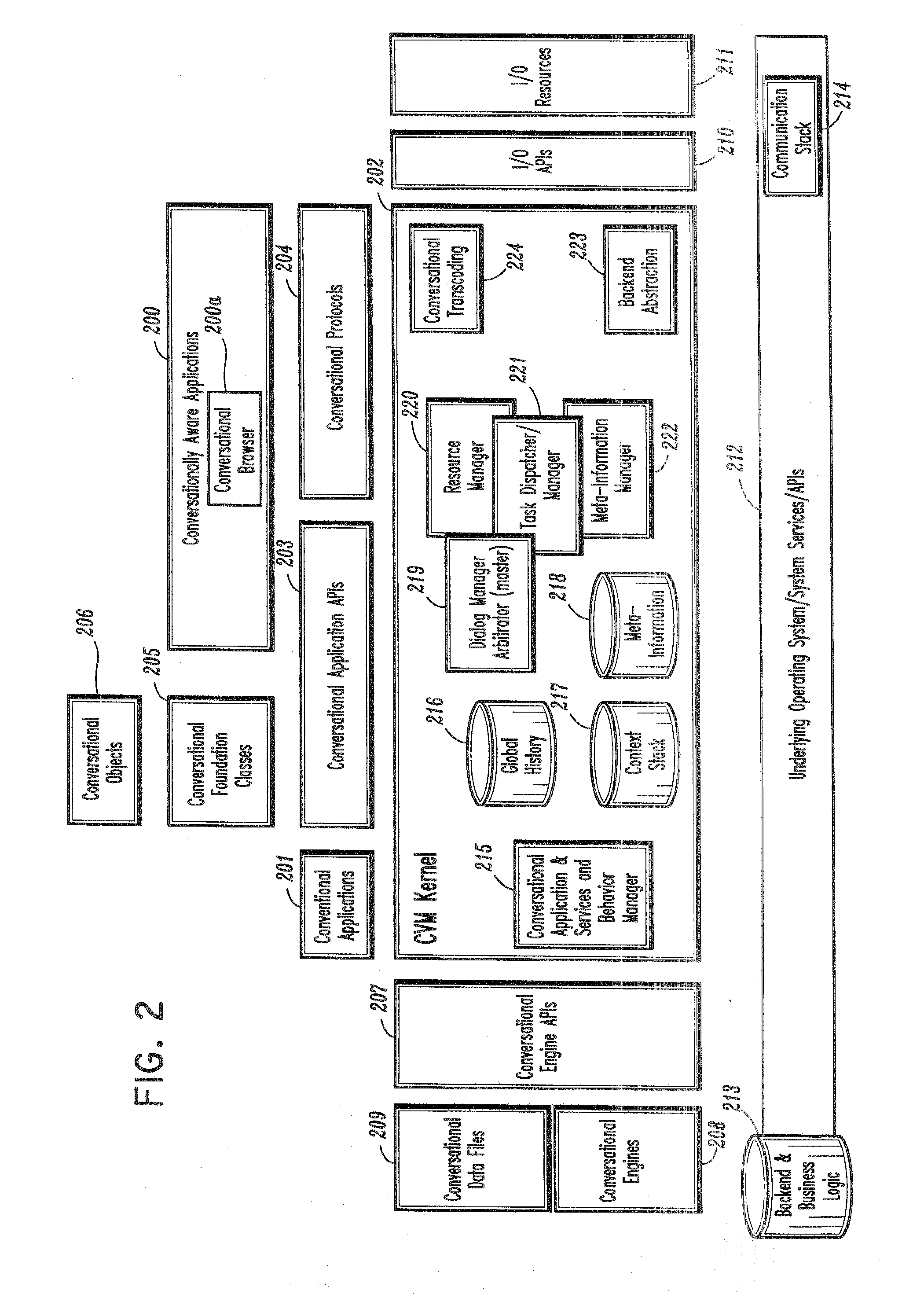Conversational computing via conversational virtual machine
a virtual machine and conversation technology, applied in the field of conversational virtual machines, can solve the problems of reducing the effectiveness of gui, limiting the access to such information by the available device, and increasing the complexity of the virtual machin
- Summary
- Abstract
- Description
- Claims
- Application Information
AI Technical Summary
Benefits of technology
Problems solved by technology
Method used
Image
Examples
Embodiment Construction
[0042] The present invention is directed to system and method for conversational computing which incorporates all aspects of conversational systems and multi-modal interfaces. A key component for providing conversational computing according to a conversational computing paradigm described herein is a CVM (conversational virtual machine). In one embodiment, the CVM is a conversational platform or kernel running on top of a conventional OS or RTOS. A CVM platform can also be implemented with PvC (pervasive computing) clients as well as servers. In general, the CVM provides conversational APIs and protocols between conversational subsystems (e.g. speech recognition engine, text-to speech etc.) and conversational and / or conventional applications. The CVM may also provide backward compatibility to existing applications, with a more limited interface. As discussed in detail below, the CVM provides conversational services and behaviors as well as conversational protocols for interaction wi...
PUM
 Login to View More
Login to View More Abstract
Description
Claims
Application Information
 Login to View More
Login to View More - R&D
- Intellectual Property
- Life Sciences
- Materials
- Tech Scout
- Unparalleled Data Quality
- Higher Quality Content
- 60% Fewer Hallucinations
Browse by: Latest US Patents, China's latest patents, Technical Efficacy Thesaurus, Application Domain, Technology Topic, Popular Technical Reports.
© 2025 PatSnap. All rights reserved.Legal|Privacy policy|Modern Slavery Act Transparency Statement|Sitemap|About US| Contact US: help@patsnap.com



